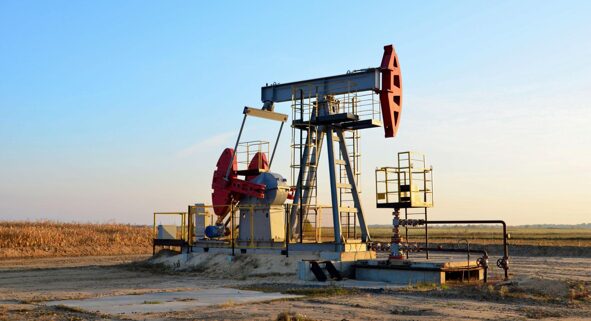Advanced pH Buffering Solutions for Extreme Oilfield Conditions
Extreme oilfield conditions push fluid systems to their limits. High temperatures, salinity and pressure fluctuations can throw off the chemistry that keeps operations running. Thus, buffering solutions become necessary. Buffers help maintain pH balance, protect equipment and keep additives working as intended.
For deep wells, thermal-stable pH buffers are essential. They hold their ground even at 350 degrees Fahrenheit to keep fluid integrity intact and effective. In this blog, you will learn about the critical role that pH buffers play in oilfield operations.
Understanding Buffering Solutions in Oilfield Applications
Buffering agents ensure the stability of fracturing fluids, keeping pH levels in check which is critical for activating crosslinkers, maintaining gel strength and protecting equipment from corrosion. Without them, fluid systems can break down fast, leading to wasted additives and poor fracture performance.
In high temperature zones, thermal-stable pH buffers are a must. They stay effective even in deep wells with recycled water and high salinity. Resistant buffers are built to handle the extremes and keep your chemistry consistent from surface to formation.
The Science of pH Control in Harsh Oilfield Conditions
pH control is the trigger point for everything that happens inside a fracturing fluid. Crosslinkers only activate within a narrow pH range. Gel viscosity drops fast if the balance shifts and if the fluid loses structure, proppant transport suffers.
Poor pH control leads to corrosion, unpredictable fracture paths and lower hydrocarbon recovery. pH buffers hold steady under heat, salinity and pressure. Whether you’re working with recycled water or pushing deep into high temperature zones, advanced pH buffering solutions keep your chemistry locked in and your results on track.
Engineering for Extremes: Thermal-Stable pH Buffers in Action
Thermal-stable pH buffers are built for the heat. They stay effective up to 350 degrees Fahrenheit, making them a solid choice for deep well operations and high temperature zones. These buffers are compatible with recycled water and high TDS environments so you get consistent performance even when fluid conditions shift.
With advanced pH buffering solutions, you get more than just pH control. You get corrosion protection, steady gel behavior and fewer additive failures. This translates to less chemical waste, fewer retreatments and better fracture results. When the pressure’s on, buffers hold the line.
Deep Well Chemistry: Performance Under Pressure
When fluids meet high pressure and high temperature zones, corrosion risk spikes fast. Lab tests and field trials in NaBr brines show that buffers with strong pH control can cut corrosion rates and prevent stress cracking in steel components. Resistant buffers are built to hold steady in deep formations even when exposed to acid gases or recycled water.
This means fewer failures, longer equipment life and better well integrity. For operators pushing deeper, pH buffering solutions are the chemistry that keeps things moving.
Environmental and Operational Advantages
Buffering solutions do more than balance pH; they help cut down on chemical usage and extend the life of your equipment. By keeping additives stable and corrosion in check, they reduce the need for frequent re-treatments and repairs. These buffers also support the reuse of produced water, even in high salinity zones which helps operators meet water management goals without compromising performance.
This means fewer fresh water withdrawals and better alignment with environmental standards. pH buffering solutions are built to support both operational efficiency and sustainability targets, making them a smart choice for forward focused oilfield teams.
Innovations in Oilfield Chemical Technologies
Smart chemistry is changing how oilfield fluids are built and managed. AI driven formulations are helping operators predict performance, cut waste and stay ahead of fluid failures. Hybrid fluid designs are gaining traction too, mixing crosslinked gels with slickwater to balance cost and control.
Thermal-stable pH buffers are already proven across acidizing, hybrid blends and high temperature gels. These buffers adapt fast, hold steady and keep additives working across a wide range of conditions.
Chemistry That Powers the Future of Fracturing
Buffering solutions are the chemistry that keeps fracturing fluids stable when conditions get tough. From corrosion control to consistent gel behavior, they help protect assets and improve recovery. pH buffers are built for high temperature zones, recycled water and deep formations.
If you’re looking to improve fluid performance and cut chemical waste, partner with an trusted advanced pH buffers provider for custom formulations. They will help you match the right buffer to your well’s demands.





























